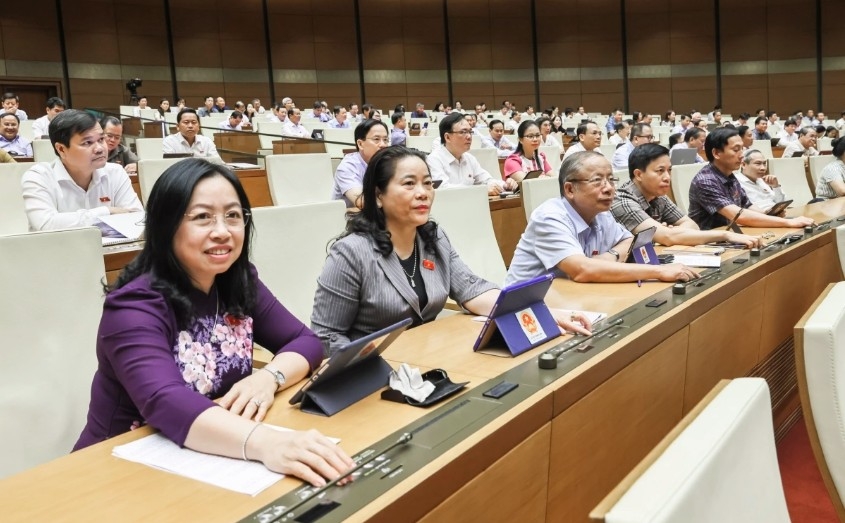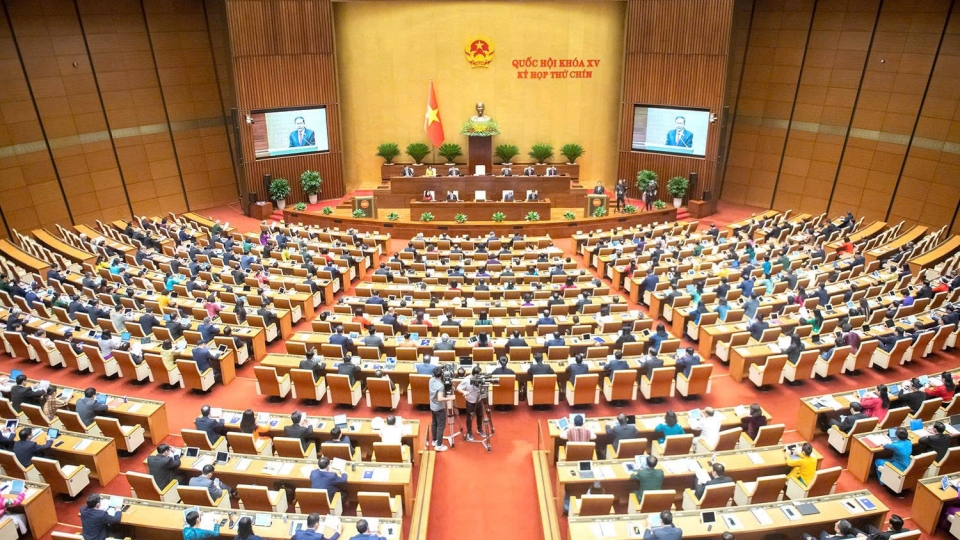NA greenlights merger of provinces and cities, cutting total to 34
VOV.VN - The National Assembly on June 12 approved a resolution on the reorganization of provincial-level administrative units, reducing the total number of provinces and centrally-run cities across Vietnam to 34.

With 461 out of 465 deputies voting in favor (96.44% of all lawmakers), the legislature endorsed the Government’s proposal to merge 52 existing provincial-level units, 48 provinces and 4 cities into 23 new ones.
The resolution takes effect immediately upon adoption. Vietnam will have 34 provincial-level units, 28 provinces and 6 centrally-run cities after the merger plan takes effect. Of these, 19 provinces and 4 cities are newly formed through the restructuring. The remaining 11 units not subject to reorganization include the provinces of Cao Bang, Dien Bien, Ha Tinh, Lai Chau, Lang Son, Nghe An, Quang Ninh, Thanh Hoa, and Son La, along with the cities of Hanoi and Hue.
The resolution takes effect immediately upon adoption. Vietnam will have 34 provincial-level units, including 28 provinces and 6 centrally-run cities, after the merger plan comes into force. Of these, 19 provinces and 4 cities are newly formed through the restructuring. The remaining 11 units not subject to reorganization include the provinces of Cao Bang, Dien Bien, Ha Tinh, Lai Chau, Lang Son, Nghe An, Quang Ninh, Thanh Hoa, and Son La, as well as the cities of Hanoi and Hue.
Relevant agencies must swiftly carry out necessary preparations to ensure the new local administrative model begins official operations on July 1, 2025. Existing provincial and municipal administrations will continue to function until the new ones are fully operational.
The National Assembly requests the Government, provincial-level People’s Councils and People’s Committees, and relevant agencies and organizations to be responsible for implementing this resolution; reorganizing and streamlining the administrative apparatus at local levels; providing support and promptly resolving difficulties and concerns of officials, civil servants, public employees, and workers affected by the restructuring; ensuring social welfare, the legitimate rights and interests of citizens and businesses, and meeting the requirements of socio-economic development, national defense, and public security in the affected localities.
The Government is responsible for accurately determining the natural areas and boundaries of the new units, both on administrative maps and on the ground. If discrepancies arise between actual field data and figures listed in the resolution, the Government may update and publicly announce the corrected data through appropriate means without needing to report back to the National Assembly.
In addition, the Government and central ministries are required to issue timely guidance and resolve any emerging issues during the restructuring process. They must also finalize the organization of local administration structures at all levels to implement the two-tier local governance model.



